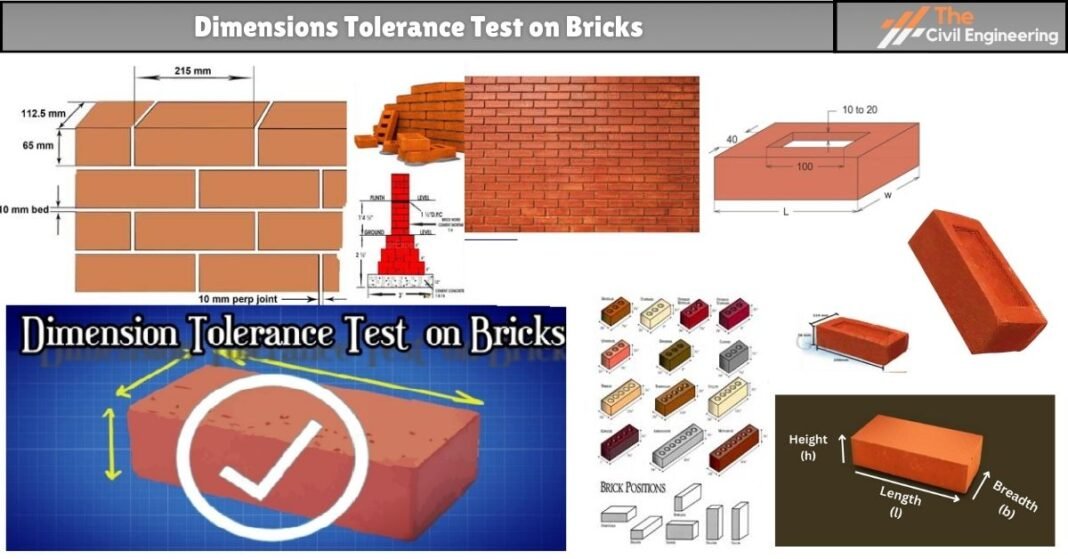1. Introduction
Bricks should have a uniform standard size. Those bricks which do not follow standard size are not suitable for construction purposes and such bricks can only be used as a filling material.
2. Dimensions Tolerance Test on Bricks
This test helps us to find the dimension of our bricks and also to check whether the brick we are using has a standard size or not.
2.1. Required Material
a. 20 Bricks

2.2. Procedure
Dimensions Tolerance Test on Bricks are carried out in the following ways:
(a) Take twenty bricks at random.
(b) Separate any loose particles of clay and projecting blisters, if present in the bricks.
(c) Manage the bricks on a smooth level ground surface in a straight series in such a way that the adjoining surfaces are in touch with each other.
The arrangement will be performed in accordance with the dimension of the bricks that are being checked. Thus,
A. For length, bricks are laid lengthwise.
B. For width, bricks are laid on width faces.
C. For height, bricks are laid on the side.
(d) The total length of the brick in a row, is then measured in all three cases.
2.3. Observation & Calculation
| Name | Size |
| a. Total length of 20 bricks Lengthwise | |
| b. Length of 1 brick | |
| c. Total length of 20 bricks widthwise | |
| d. Width of 1 brick | |
| c. Total length of 20 bricks thickness wise | |
| d. Thickness of 1 Brick |
2.4. Result
The standard size of a brick in India, UK and the USA should be:
IS = (19 x 9 x 9) cm
USA = (203 × 92 × 57) mm
UK = (215 x 102.5 x 65) mm
2.5. Precautions
a. Handle brick carefully.
b. Put the bricks on level ground.
c. Note down length, breadth, and height of brick carefully.
| Read More: Efflorescence Test on Bricks |
| Read More: Compression Test on Brick |

